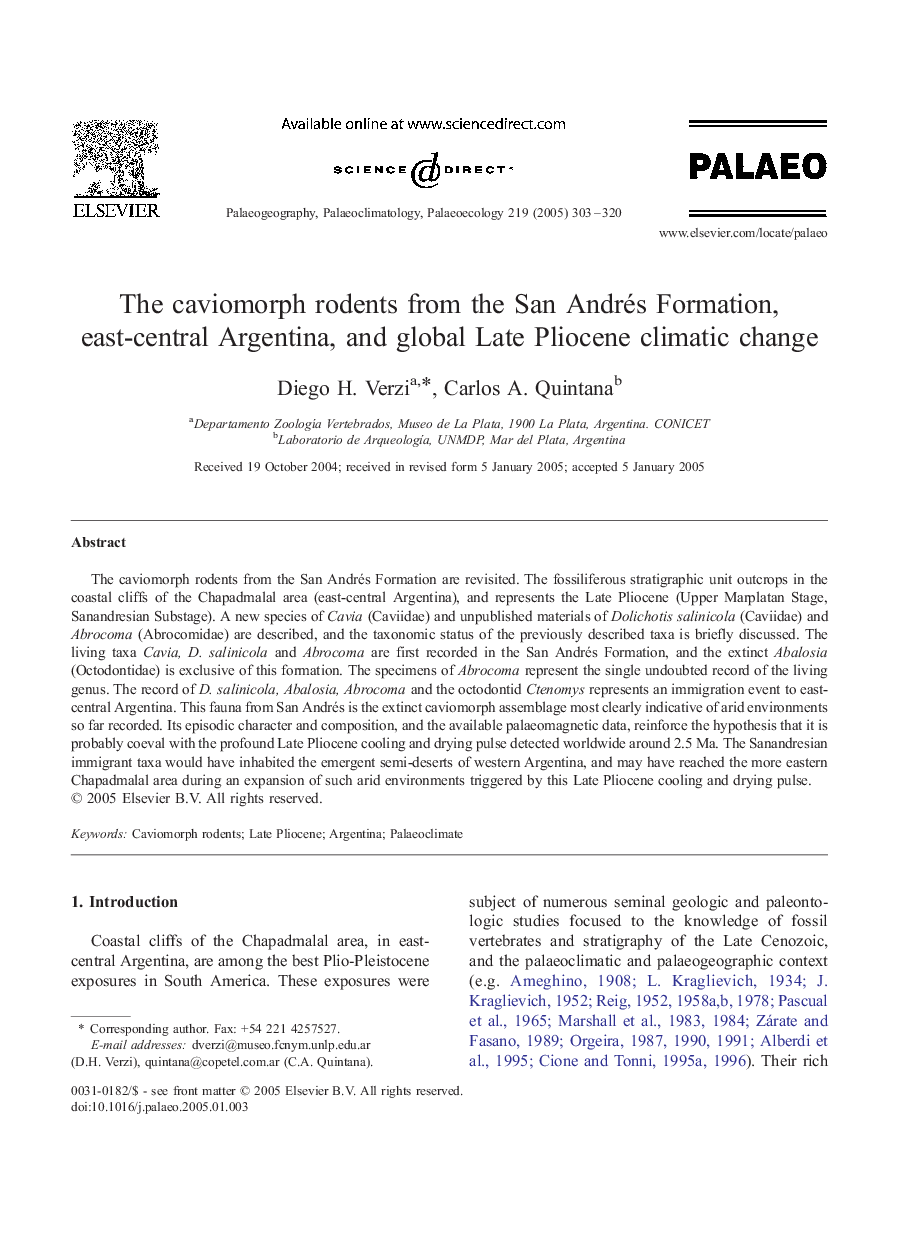| Article ID | Journal | Published Year | Pages | File Type |
|---|---|---|---|---|
| 9463071 | Palaeogeography, Palaeoclimatology, Palaeoecology | 2005 | 18 Pages |
Abstract
The caviomorph rodents from the San Andrés Formation are revisited. The fossiliferous stratigraphic unit outcrops in the coastal cliffs of the Chapadmalal area (east-central Argentina), and represents the Late Pliocene (Upper Marplatan Stage, Sanandresian Substage). A new species of Cavia (Caviidae) and unpublished materials of Dolichotis salinicola (Caviidae) and Abrocoma (Abrocomidae) are described, and the taxonomic status of the previously described taxa is briefly discussed. The living taxa Cavia, D. salinicola and Abrocoma are first recorded in the San Andrés Formation, and the extinct Abalosia (Octodontidae) is exclusive of this formation. The specimens of Abrocoma represent the single undoubted record of the living genus. The record of D. salinicola, Abalosia, Abrocoma and the octodontid Ctenomys represents an immigration event to east-central Argentina. This fauna from San Andrés is the extinct caviomorph assemblage most clearly indicative of arid environments so far recorded. Its episodic character and composition, and the available palaeomagnetic data, reinforce the hypothesis that it is probably coeval with the profound Late Pliocene cooling and drying pulse detected worldwide around 2.5 Ma. The Sanandresian immigrant taxa would have inhabited the emergent semi-deserts of western Argentina, and may have reached the more eastern Chapadmalal area during an expansion of such arid environments triggered by this Late Pliocene cooling and drying pulse.
Related Topics
Physical Sciences and Engineering
Earth and Planetary Sciences
Earth-Surface Processes
Authors
Diego H. Verzi, Carlos A. Quintana,
